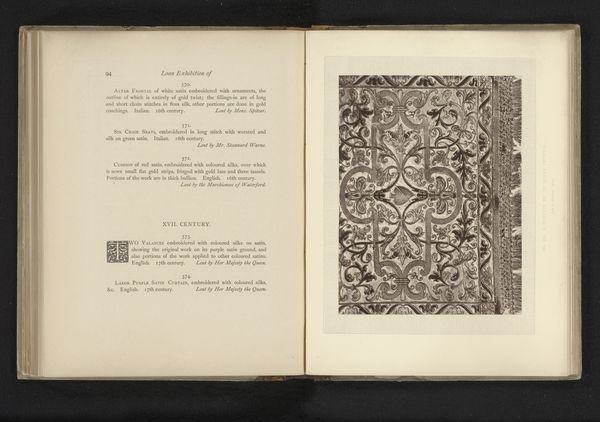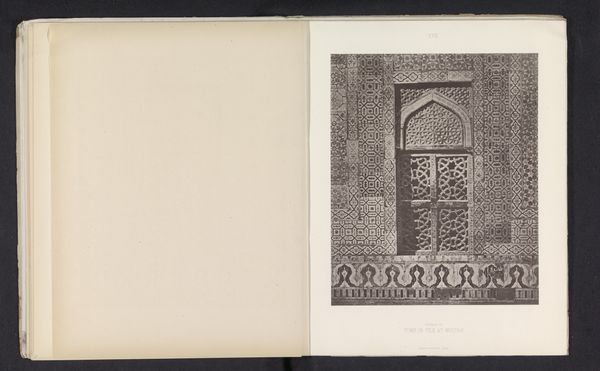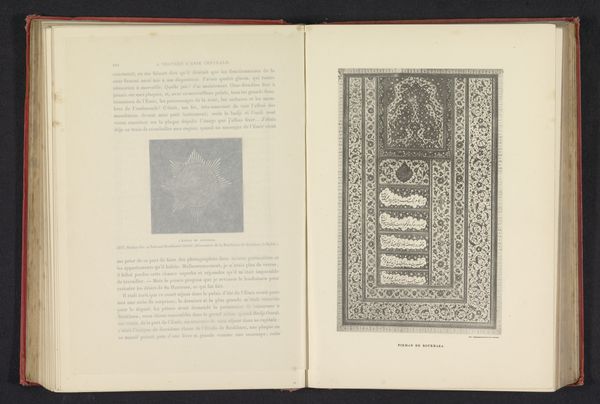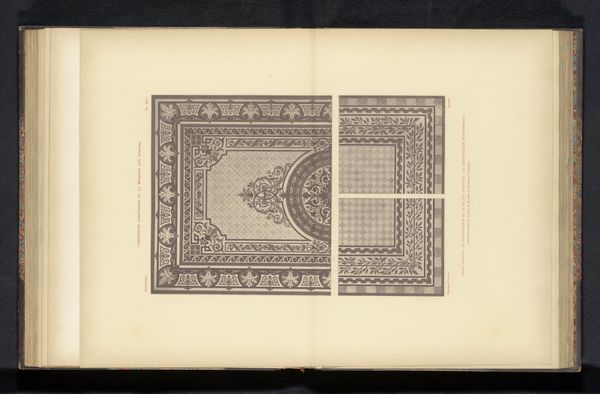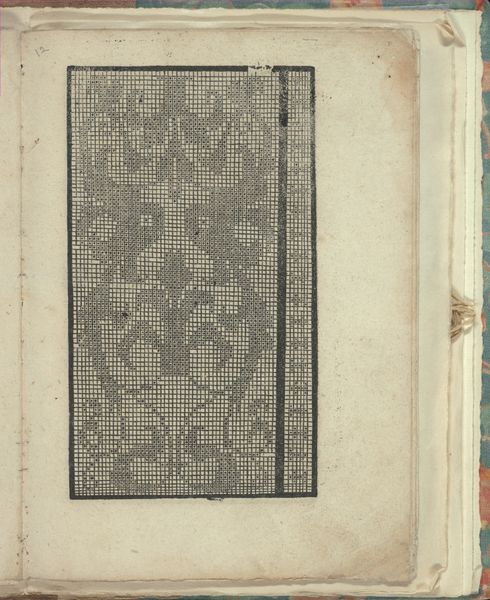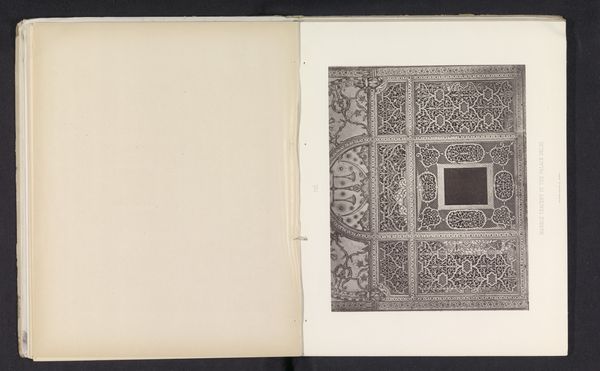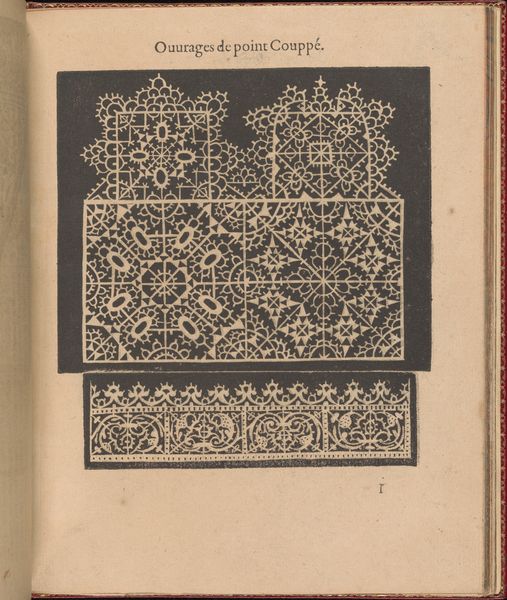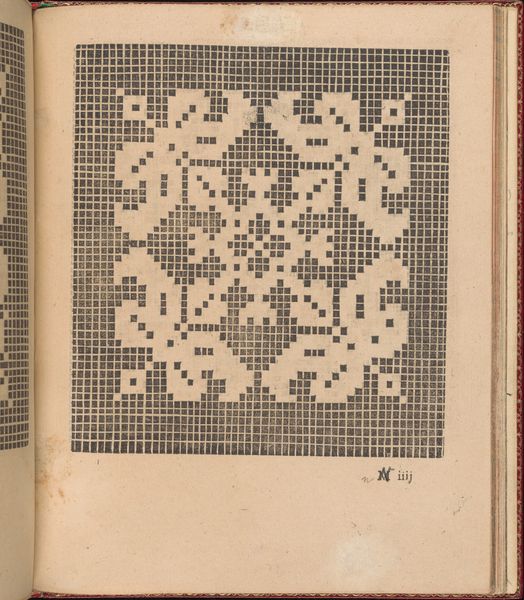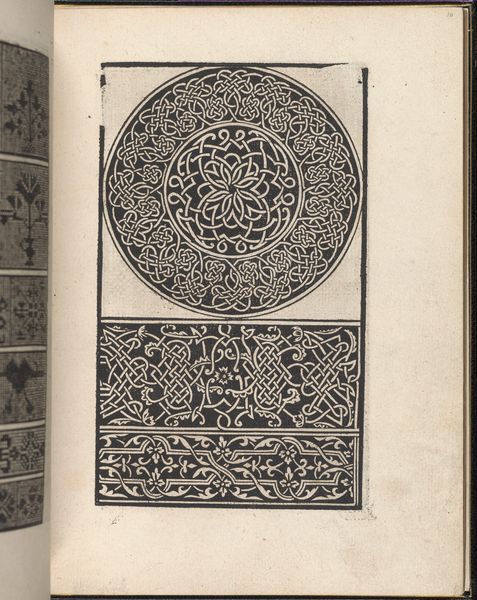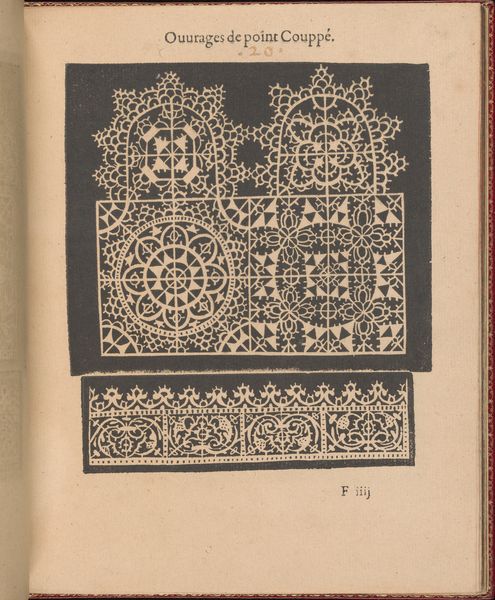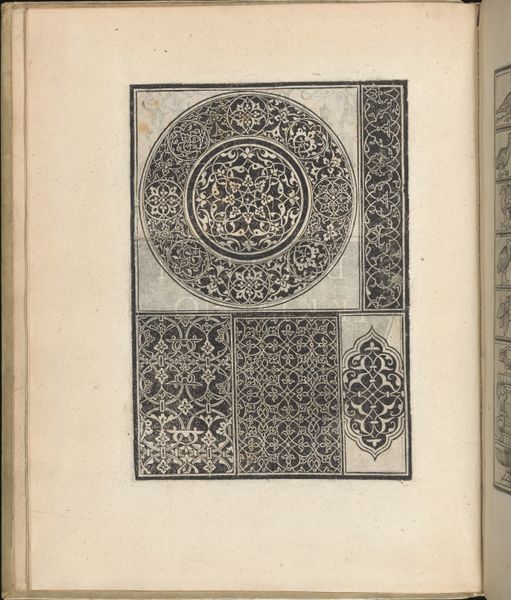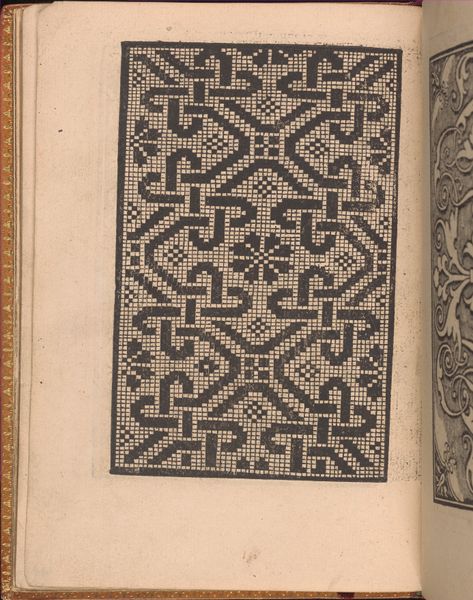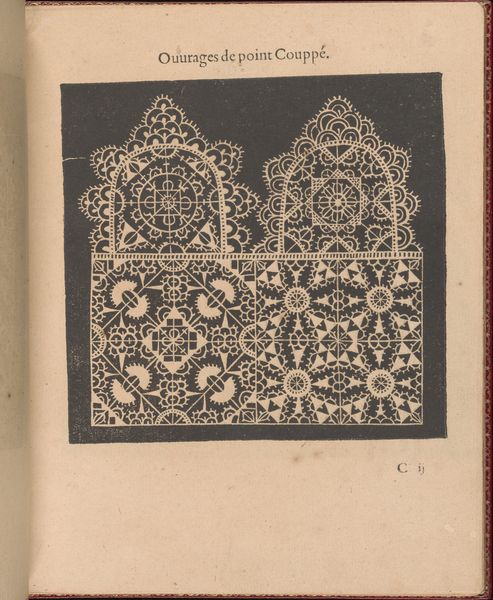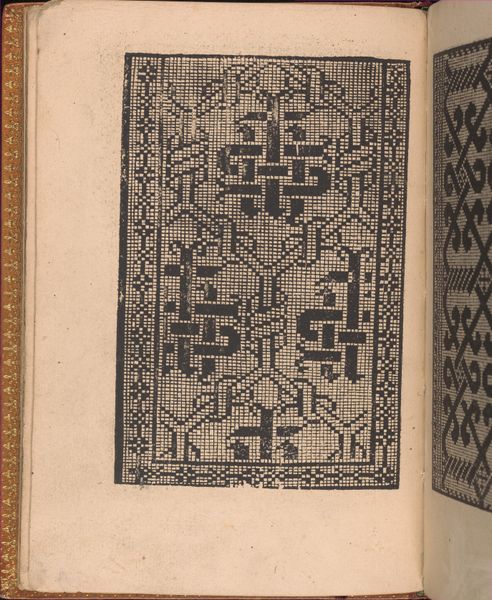
Raam gedecoreerd met geometrische patronen uit Tunesië tentoongesteld op de Great Exhibition of the Works of Industry of All Nations van 1851 in Londen 1851
0:00
0:00
print, photography, architecture
# print
#
photography
#
geometric
#
islamic-art
#
architecture
Dimensions: height 219 mm, width 170 mm
Copyright: Rijks Museum: Open Domain
Hugh Owen made this photograph of a Tunisian window frame decorated with geometric patterns for the Great Exhibition in London, 1851. Owen was commissioned to document objects from around the world, showcased to celebrate industrial advancements and cultural exchange. However, this exhibition occurred within the context of British colonialism. As such, the presentation of this window frame raises questions about cultural appropriation and the representation of non-Western cultures. These intricate designs, deeply rooted in Tunisian identity, are displayed in London, far removed from their original context. There's an inherent power dynamic at play here. Consider how the geometric patterns, traditionally used in Islamic art and architecture, symbolize unity and infinity. When placed within the Great Exhibition, what did their display communicate? A sense of wonder, an exotic otherness, or perhaps an unacknowledged appropriation? Think about how these objects, once integral to daily life and spiritual practices, became objects of spectacle and study.
Comments
No comments
Be the first to comment and join the conversation on the ultimate creative platform.
